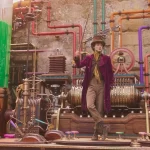Home Video Hovel- Bird of Paradise, by Scott Nye
Bird of Paradise begins with one of the more amusing screen credits – “suggested by the play by Richard Walton Tully.” The truth is that Tully’s play was not a prized possession for producer David O. Selznick, who inherited the project upon taking the reins at RKO; he never even read it. Nor did director King Vidor; he gave it a go, but gave up reading halfway through and told Selznick it’d make a terrible film. Selznick, never one to be deterred by his talent’s disinterest in his ambitions, told Vidor he could do whatever he wanted as long as he delivered “three wonderful love scenes,” have star Delores del Rio jump into a volcano at the end, and call it Bird of Paradise.
Vidor delivered on Selznick’s request, but the initial freedom that so intrigued him perhaps proved too much. Bird of Paradise maintains a romantic, dreamy tone throughout, but never really builds to much nor lands satisfactorily on its dramatic beats. Viewed in the context of its time, it’s chock-full of the sex appeal that drove so many ticket sales in the Pre-Code era – Orson Welles is alleged to have said that del Rio represented the “highest erotic ideal” in the film. But this is the story of a man who gives up everything, at least temporarily, to be with a girl who lives on an island, and they never establish a connection between Joel McCrea and del Rio that amounts to more than one’s desire to sleep with the other. This is certainly a strong motivator, but not enough to carry a picture, which starts with a bang but grows more tiresome as it falls back on an increasingly racist portrayal of the natives and a rather staid romance.
The story goes that Selznick cast Joel McCrea after seeing him surf, which suggests that Selznick plucked the future star out of nowhere, but McCrea has already been in twenty films by the time of Bird of Paradise, over half in starring or major supporting roles. Here he displays many of the qualities that would endear him to audiences during the depression – the classic image of the American adventurer. Stalwart, hardworking, handsome, just devil-may-care enough to stand out, just humble enough to pay respect when due. It’s prime cinema, and it accounts for much of the picture’s success.
Bird of Paradise also provides another draw for classic movie fans – Busby Berkeley choreographed all of the dance scenes, only a year before he really became Busby Berkeley. The rare independent contractor, he worked on this film for RKO and then exploded out of Warner Brothers in 1933 with 42nd Street, Footlight Parade, and Gold Diggers of 1933 (one of my favorite films of all time, for what it’s worth). While the numbers here are not nearly as ambitious as those with which he’d make his name, it provides a fun window into a developing talent.
With cinematography credited to three separate people, it’s difficult to determine whom to assign the credit to, but Vidor roped them all together to create an enriching palette, including many underwater shots. This is by far Bird of Paradise‘s greatest asset, with the sharp editing and Max Steiner’s uncharacteristically melancholic score crafting an ease unique to early sound cinema. Kino’s new Blu-ray release mostly does these elements justice, giving us an extraordinary video transfer of George Eastman House’s new restoration, sourced from the original nitrate print from Selznick’s private collection.
The sound fares somewhat worse, especially in the beginning, but it improves greatly as the film progresses. Steiner’s score in particular comes through very well, but on the whole, this is an 80-year-old film, and one must grade these things on a curve. You’ll never want for intelligibility, certainly.
This is a bare bones release, so no special features, but the quality of the transfer more than justifies a purchase for any fan of Pre-Code films especially. With dwindling opportunities to view true film prints, these HD transfers that honestly maintains the joys of celluloid are quickly becoming treasures.





























